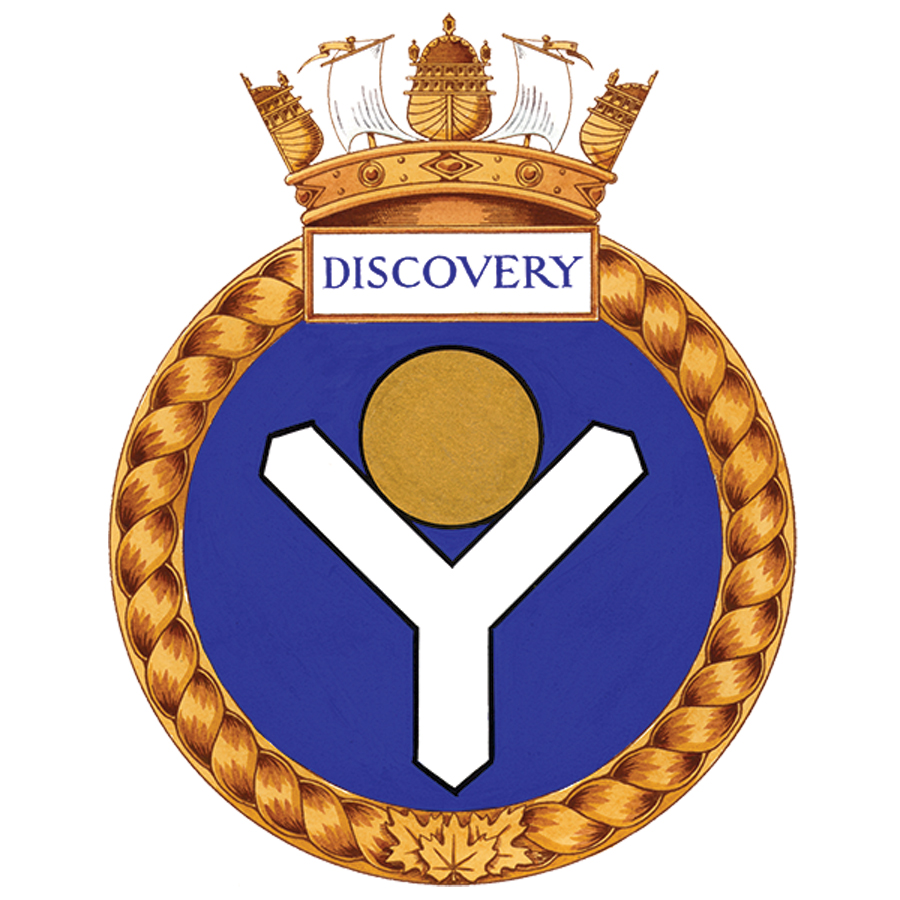Jackspeak: Badges and Battle Honours
By Lookout Production on Nov 17, 2022 with Comments 0
Mark Nelson
—
Every commissioned warship in the Royal Canadian Navy (RCN) is honoured with an official ship’s badge based on the ship’s name and designed with heraldic elements. The badge serves as a unifying symbol for the ship’s company.
Before the Second World War, there was no official control over the badge a Canadian warship might wear. During the Second World War, with Commanding Officers and crew members coming up with their designs, we saw ships emblazoned with Donald Duck, as in HMCS Snowberry, or an image of St. Clair blasting a U-boat with lightning flashing from her fingertips, as in HMCS St. Clair. HMCS St. Laurent, a ship named ‘Sally Rand’, had a picture of the famous burlesque dancer knocking down dive bombers with her fan. HMCS Wetaskiwin displayed an image of the Queen of Hearts sitting in a puddle of water. These badges boosted morale and offered a uniting symbol for the ship’s crew. However, at the end of hostilities, something more official was warranted.
In 1945, Naval Staff decided that ships remaining in service should have official badges designed with the elements of heraldry. The task of producing official badges for the RCN was initially given to Lieutenant-Commander Alan Brookman Beddoe (1893-1975), a Canadian war artist, consultant in heraldry, and former First World War prisoner of war. Incidentally, Beddoe also illustrated the Books of Remembrance on display in the Peace Tower on Parliament Hill in Ottawa.
Badge designs are made to connect to the ship’s name, and incorporate heraldic symbology and terminology. For example, colours are described using the heraldic terms gules (red), azure (blue), vert (green), sable (black), purpure (purple), or (gold), and argent (silver or white). In heraldic language, the badge of HMCS Calgary is described as, ‘Or, a bend wavy azure charged with a like bendlet argent. In front across the centre of a bow stringed fess-wise, and arrow point upwards in pale, both sable’. The term fess refers to the horizontal direction, and pale refers to a vertical direction.
HMCS Calgary’s badge, consisting of a bow and arrow over a wavy background, refers to the region’s Indigenous people and the Bow River, an important local geographical feature. While most badges seek this kind of connection to the ship’s name, some badges contain a rebus, such as a badge for HMCS Discovery that features a yellow disc over a white letter ‘y’. Thus, “disc-over-y” = HMCS Discovery.
Battle Honours are assigned to a warship, and with continuous service, they can carry forward to other ships with the same name. A specially made Battle Honours Board is a fixture in all HMC ships and is proudly displayed on the quarterdeck when the brow is operational.
Many Naval Reserve Divisions, such as York in Toronto, Hunter in Windsor, and Queen in Regina, bear names of ships whose histories go back to the 16th Century. The commissioned ship with the most extended battle honours is HMCS Unicorn, a stone frigate in Saskatoon, Sask. Named after one of the first vessels to enter Hudson Bay in search of the Northwest Passage, this name serves as a point of pride to these prairie sailors as Unicorn carries a list of fifteen battle honours from Armada (1588) to Korea (1950-53).
You will find over 4,000 examples of Jackspeak in my book Jackspeak of the Royal Canadian Navy (2nd ed.).
The author of ‘Jackspeak of the Royal Canadian Navy’ and ‘Whiskey 601’, Mark Nelson developed a love of the Navy’s language and lifestyle over his 26-year career in the service. After retiring as a Chief Petty Officer Second Class, he now works as a Library Systems Specialist at Red River College Polytechnic in Winnipeg, Man.
Follow Mark on Twitter @4marknelson
Filed Under: Top Stories
About the Author:






